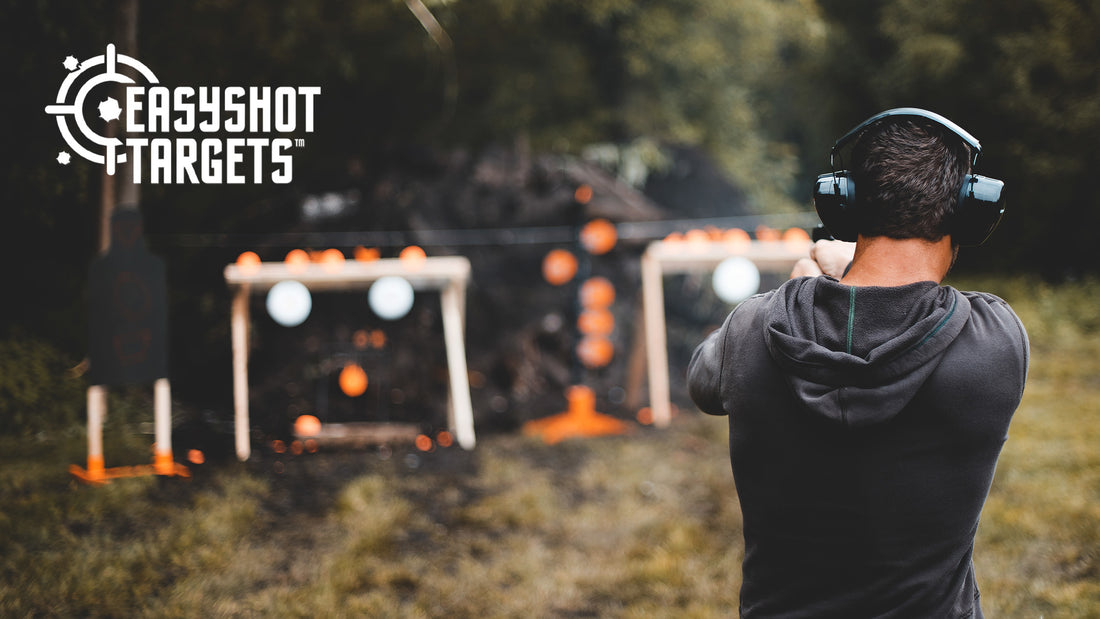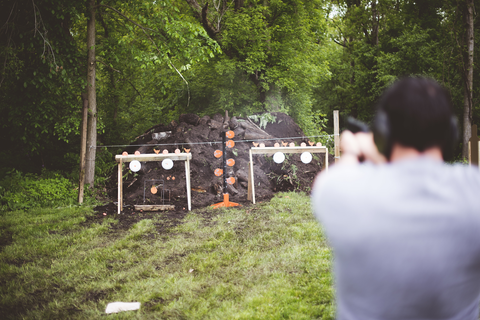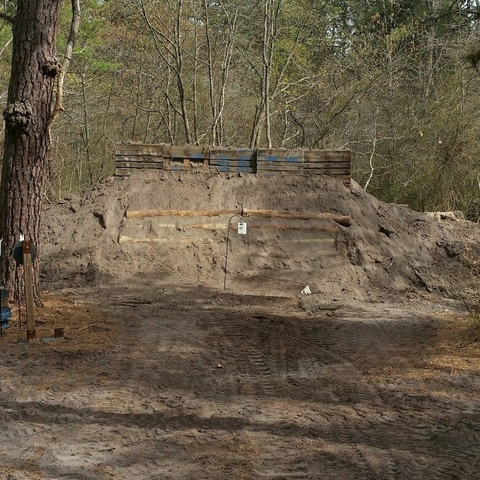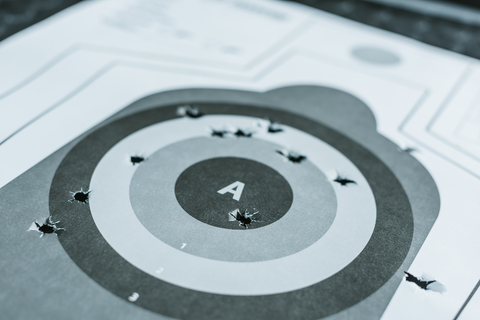Creating a shooting range in your backyard means you can practice shooting anytime you want, for as long as you like. You won't have to wait for a spot at public ranges or worry about their opening hours. This guide will show you why having your own gun range is great for getting better at shooting.
Is It a Good Idea to Build a DIY Shooting Range?
Credit: Envato Elements/ wirestock
Absolutely, and here’s why.
First, the convenience factor is unbeatable. Having a range in your own backyard means you can practice your shooting skills anytime you want, without the need to travel to a public range. This can help to improve your shooting skills much faster. Also, when you build your own shooting range, you can customize it to suit your preferences. You can use whatever targets you want, customize the stands, and even have the lighting of your choice.
Is Your Backyard Suitable for a DIY Shooting Range?
Credit: Envato Elements/ Chibelek
There are a few things you need to check to see if your backyard or private land is suitable for a shooting range. Firstly, make sure you have a suitable backdrop to catch bullets and prevent any risk of them bouncing off. This backdrop should ideally be 20-60 feet high and can be something like a large dirt bank, hill, or canyon.
Secondly, check the layout of the land. Ideally, your shooting range should be positioned in flat, open spaces.
Lastly, make sure you've got enough space. You need at least 40 acres of land. But if you just want a small handgun range near your home, you can manage with as little as five acres. If you're aiming for long-range shooting, you'll need even more space, around 500 acres at least.
Is It Legal to Have a DIY Shooting Range?
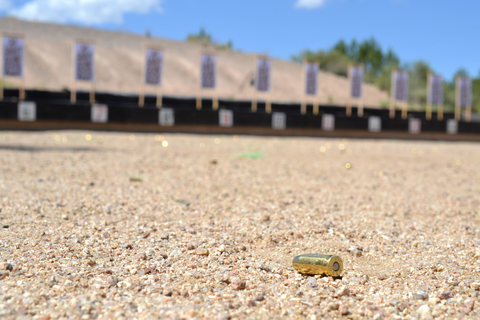
Credit: Envato Elements/ MargJohnsonVA
This depends on where you live since laws and regulations can vary greatly from one area to another.
Make sure to research and understand the specific laws in your city, county, and state before starting your project. Some places might allow shooting on private property with certain restrictions, such as distance from other homes, noise levels, and safety measures you need to have in place. Other areas might have stricter rules, requiring specific permits or not allowing backyard ranges at all due to lead contamination or safety issues. Also, in case anything goes wrong, you want to make sure that you contact an insurance agent to get liability insurance.
How to Build a DIY Shooting Range
Building a DIY home shooting range requires careful planning and consideration of safety and legal requirements. Here’s a step-by-step guide to get you started:
1) Start by Building Shooting Stands
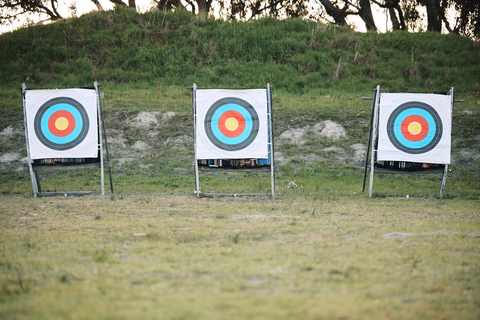
Credit: Envato Elements/ YuriArcursPeopleImages
Shooting stands are essential for holding targets at varying distances and heights. Here’s how you can start:
- Start by gathering the necessary materials and equipment. You'll need sturdy posts (like 2x4s for the frames), plywood or heavy cardboard for the target holders, screws, nails, and a hammer or drill. Consider weather-resistant materials if the range will be exposed to the elements.
- Plan the size and design of your stands based on the types of targets you plan to use. For versatility, create a few different sizes. A standard design includes a base, a vertical post, and a horizontal piece at the top to attach the target. Make sure your design is stable and can withstand the impact of bullets without tipping over.
- Cut your wood to the desired lengths according to your design. Assemble the base first, ensuring it is wide enough to provide stability. Attach the vertical post to the center of the base using screws and metal brackets for extra support. Then, attach the horizontal piece at the top of the vertical post.
- Include safety features such as sandbags around the base of your stands to prevent tipping. Also, position your stands so that your shots are directed towards a safe backstop.
- Place your stands at measured intervals (a few feet away from each other) in your shooting range to practice at different distances. Make sure there’s a clear line of sight from your shooting line to each stand.
2) Build the Backstop
Credit: Snipers Hide
If you don't have a natural backstop, then you'll have to build one yourself to prevent bullets from leaving the range area and causing injury. Here's how to build one:
- First, you'll need to choose the right materials. The most common are dirt, sand, or rubber mulch.
- Next, you'll need to determine the size. Your backstop or bullet traps need to be large enough to safely catch all shots fired, even if they miss the target. A general rule is to make it at least 8 feet tall and 12 feet wide. However, the size might vary based on the type of firearms you’re using and the distance from which you’re shooting.
- Make sure you place your backstop at the end of your shooting range, in the direction you’ll be firing. It should be positioned on level ground.
- If you’re using dirt or sand, you’ll need to pile it high and compact it so that it’s dense enough to stop bullets. You can also consider using barriers like railroad ties or heavy-duty wooden planks in front of the dirt or sand for extra stopping power.
- For a rubber mulch backstop, you can build a frame out of wood or metal and fill it with the mulch. The frame should be sturdy and able to withstand the impact of bullets. The rubber mulch should be several feet deep to effectively stop bullets.
3) Attach the Shooting Targets
Credit: Envato Elements/ LightFieldStudios
Once your backstop is in place, it's time to attach your shooting targets. There are many types of targets you can use, from simple paper targets to reactive steel targets. For paper targets, just use staples and clips to attach them to the shooting stand. For steel targets, ensure they are hung or mounted securely using chains or sturdy hooks. Hang it at a slight angle to direct bullet splatter safely toward the ground.
4) Figure Out the Lighting
Credit: Envato Elements/ JulieAlexK
If your home gun range lacks natural light or you want to use it when it's dark, you'll need to install artificial lighting. Opt for outdoor, weather-resistant lights that can illuminate your shooting area without creating glare or shadows that could impair visibility. Position lights high enough to cover the shooting area and targets but ensure they don't shine directly into shooters' eyes.
Summary
Building a DIY outdoor range in your backyard can greatly improve your shooting practice since you can train whenever you want, without having to travel to a commercial range. By following the steps mentioned in this blog, you can create a safe, efficient, and personalized space to improve your shooting skills.
Looking to make your outdoor and indoor shooting range sessions even more effective? EasyShot Paper Targets are here to help. Our targets are designed for shooters who demand the best in quality and performance. Shop with us today.

